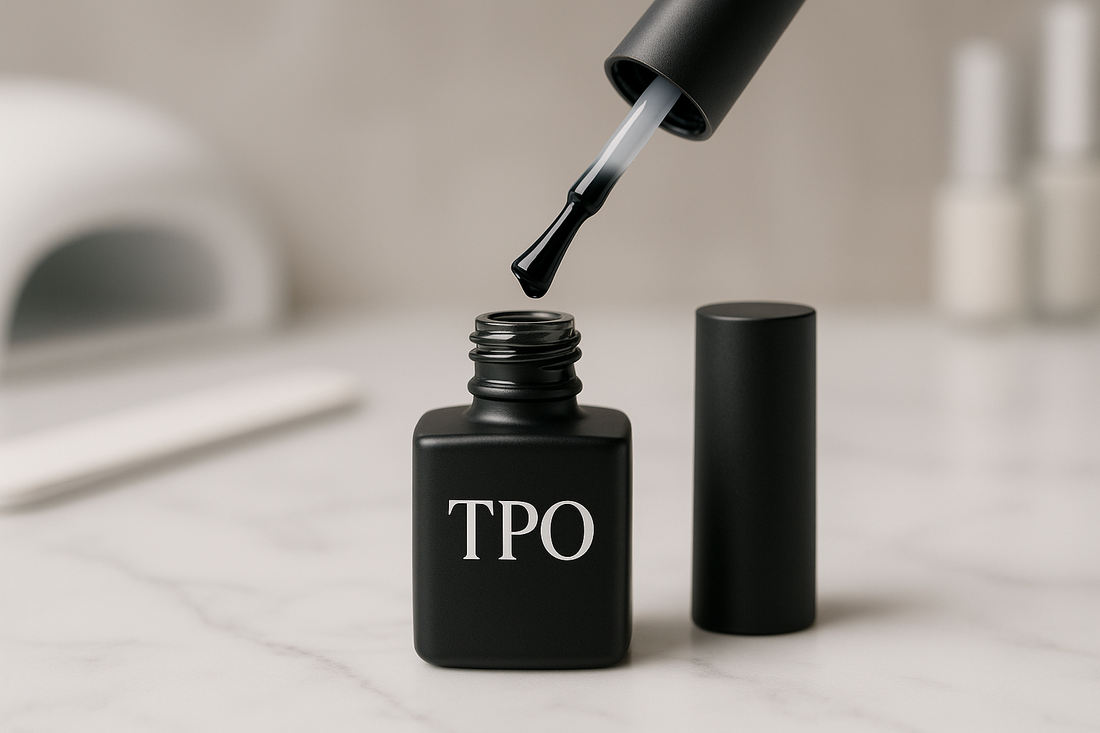
TPO in Cosmetics: What It Is, Why It’s Changing, and What Nail Pros Should Do
Share
Quick take
TPO (trimethylbenzoyl diphenylphosphine oxide) is a high-efficiency photoinitiator that helps UV/LED gels cure fast with good color stability. Typical levels in nail gels are around ~2% (often 1–3%), historically permitted up to 5% in professional nail systems.
EU: TPO becomes prohibited in cosmetics from 1 September 2025 via Omnibus Act VII (Regulation (EU) 2025/877), following its CMR 1B reproductive toxicity classification under CLP. No exemption was granted, so it’s added to Annex II (banned list).
UK (Great Britain): Not yet banned as of today; industry guidance expects alignment in late 2026. Until UK legislation changes, use remains permitted in GB.
Elsewhere (U.S./Asia): No parallel ban right now; frameworks differ (e.g., U.S. FDA doesn’t pre-approve cosmetic ingredients and bans are narrower), so TPO is still allowed in many markets.
What is TPO?
TPO is a photoinitiator—a molecule that absorbs UV/LED light and kick-starts polymerization. In gel nail systems, that means faster, harder cures with minimal yellowing and good color hold. In practice, nail gels have commonly used ~1–3% TPO, with earlier expert safety opinions supporting use up to 5% in professional nail modeling products.
Why is the EU banning TPO in 2025?
In January 2024 TPO was classified as a CMR Category 1B reproductive toxicant under the EU’s CLP system. Under Article 15(2) of the EU Cosmetics Regulation, substances classified as CMR are prohibited in cosmetics unless an exemption is granted. The Commission confirmed TPO’s Annex II entry via Regulation (EU) 2025/877, with application from 1 September 2025, the same date the harmonized classification applies.
The EU ban isn’t a comment on salon misuse; it’s a legal trigger that follows the new CMR classification, regardless of the relatively low levels used in nail gels.
For practical industry context, Doug Schoon (nail science expert) has highlighted that while TPO helped achieve rapid, reliable cures, brands can reformulate with alternative photoinitiators without sacrificing performance.
What about the UK?
As of 31 August 2025, Great Britain has not yet enacted a TPO ban, so products with TPO remain permitted in GB. Multiple trade and industry sources expect GB to align in 2026 (likely late 2026), but this is guidance, not law today. Watch for an OPSS/UK statutory instrument to make it official.
Why isn’t TPO banned in the U.S. or across Asia?
Regulatory systems differ:
United States: The FDA (even after MoCRA) doesn’t pre-approve cosmetic ingredients; it intervenes if products are adulterated or misbranded. Only a small number of ingredients are outright prohibited, and TPO isn’t currently one of them—hence many U.S. products can still legally use TPO.
Asia-Pacific: There’s no single, harmonized list—countries like China, Japan, and Korea operate distinct systems and timelines. Unless a jurisdiction explicitly adopts an EU-style prohibition, TPO may remain permitted by default.
Is TPO “critically harmful” at salon levels?
Previous scientific opinions and industry testing supported safe professional use of TPO in nail modeling products at ≤5%, with many gels formulated around 1–3%. The EU’s change is driven by hazard classification and legal rules for CMR substances—not by new evidence of widespread harm at salon-use concentrations. That said, skin contact avoidance and correct curing are always essential to minimize sensitization risks.
What should salons and techs do with gel products now?
If you’re in the EU
Stop placing/selling/using TPO-containing cosmetics from 1 Sept 2025. Audit stock, check INCI (look for names like “(2,4,6-trimethylbenzoyl) diphenylphosphine oxide”), and switch to TPO-free systems.
If you’re in Great Britain (UK)
Currently permitted to use/sell TPO-containing gels (until UK law changes).
Everywhere
Match the lamp to the gel system and follow cure times—proper curing is crucial for performance and safety.
Avoid skin contact; work cleanly, especially around the sidewalls and cuticle.
Prefer reputable brands with clear SDS, CPSR/PIF compliance and transparent labeling.
Begin migrating to TPO-free (and HEMA-free, if that’s your policy) systems to future-proof services.
Our commitment: Blulux Gel System™ without TPO or HEMA
We’re formulating a new generation of Blulux Gel System™ gels that are both HEMA-free and TPO-free, delivering the same salon-grade adhesion, clarity, and wear—without ingredients entering Annex II in the EU or under increasing scrutiny globally.
